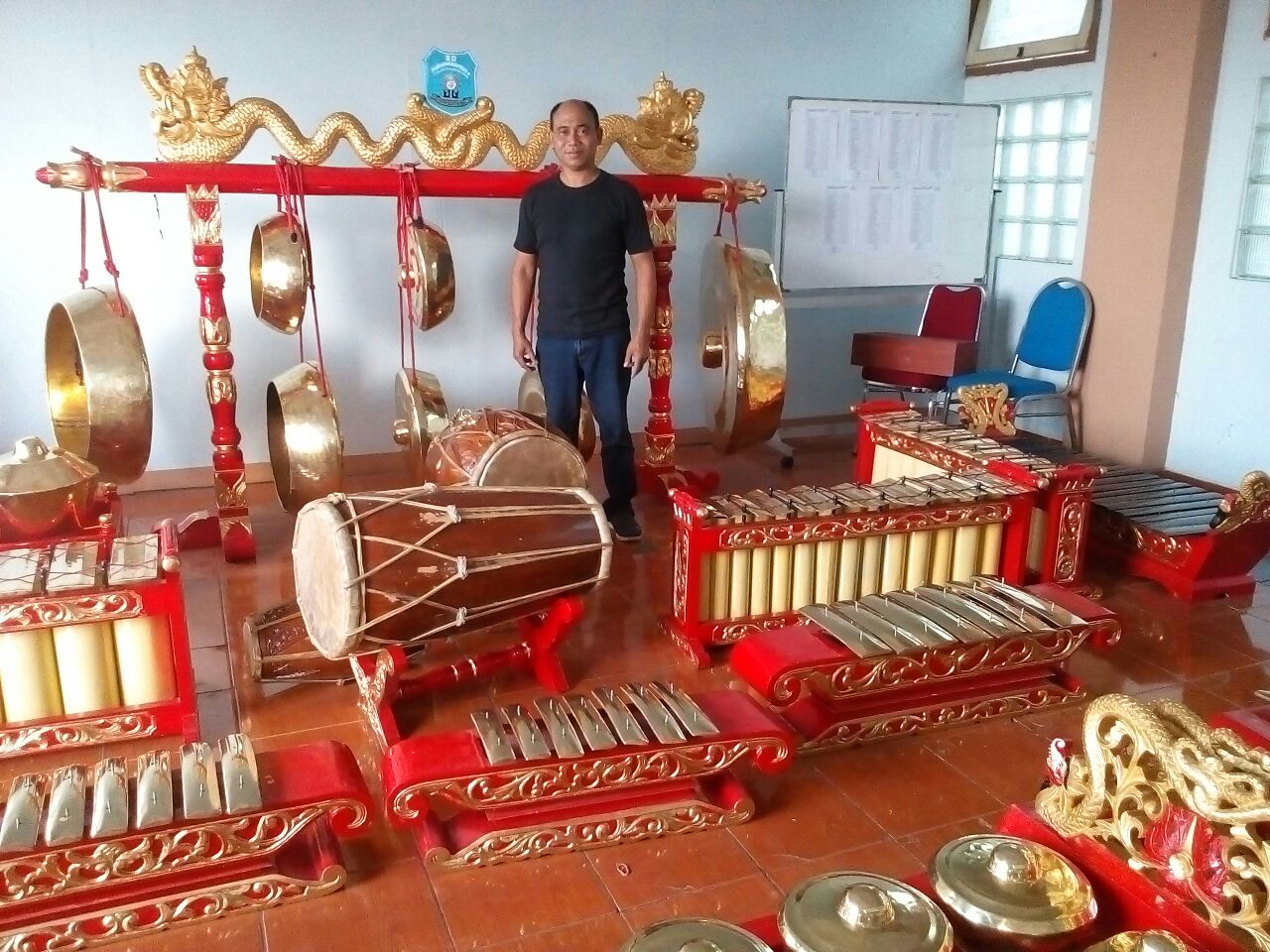Gong
PENGRAJIN GAMELAN
"MADU LARAS"
NO SIUP: 511.3/2933/411.306/2013
"MADU LARAS"
NO SIUP: 511.3/2933/411.306/2013
Menerima Pesanan dan Perbaikan Gamelan Jawa
Laras Pelok , Slendro dan Diantonis beserta ancak / tempat dengan ukir biasa / timbul
Per biji ataupun Per Set
HUBUNGI:
Bpk Karyadi / Bpk Pardjono
No. HP : 085655749199
082234310871
0358-325585
See Youtube:
https://www.youtube.com/watch?v=88KVwNMyaho&spfreload=5
https://www.youtube.com/watch?v=3rAfjFbtrgQ
https://www.youtube.com/watch?v=3K9y3ni-Zpc&t=16s
https://www.youtube.com/watch?v=mVt92DhxHlI
https://www.youtube.com/watch?v=88KVwNMyaho&spfreload=5
https://www.youtube.com/watch?v=3rAfjFbtrgQ
https://www.youtube.com/watch?v=3K9y3ni-Zpc&t=16s
https://www.youtube.com/watch?v=mVt92DhxHlI
Gong merupakan sebuah alat musik pukul yang
terkenal di Asia Tenggara dan Asia Timur. Gong ini digunakan untuk alat musik tradisional. Saat ini
tidak banyak lagi perajin gong seperti ini.
Gong yang telah ditempa belum dapat ditentukan nadanya. Nada gong baru
terbentuk setelah dibilas dan dibersihkan. Apabila nadanya masih belum sesuai,
gong dikerok sehingga lapisan perunggunya menjadi lebih tipis.
GONG
A gong (from Javanese, Indonesian, Malay: gong; Chinese: 鑼; pinyin: luó; Thai: ฆ้อง Khong; Vietnamese: cồng chiêng) is an East and South East Asian musical percussion instrument that takes the
form of a flat, circular metal disc which is hit with a mallet. It originated
in China[citation needed] and later
spread to Southeast Asia, and it can
also be used in the percussion section of a Western-style symphony orchestra. It has been
suggested that it originated in Central Asia. Bronze gongs were widely used in
ancient Greece and Rome, for instance in the famous Oracle of Dodona.[1][2]
Gongs broadly fall into one of three types: Suspended gongs are more
or less flat, circular discs of metal suspended vertically by means of a cord
passed through holes near to the top rim. Bossed or nipple gongs
have a raised centre boss and are often suspended and played horizontally. Bowl
gongs are bowl-shaped, and rest on cushions and belong more to bells than
gongs. Gongs are made mainly from bronze or brass but there are many other alloys in use.
Gongs produce two distinct types of sound. A gong with a substantially flat
surface vibrates in multiple modes, giving a "crash" rather than a
tuned note. This category of gong is sometimes called a tam-tam to
distinguish it from the bossed gongs that give a tuned note. In Indonesian
gamelan ensembles, some bossed gongs are deliberately made to generate in
addition a beat note in the range
from about 1 to 5 Hz. The use of the term "gong" for both these
types of instrument is common.
In older Javanese usage and in modern Balinese usage, gong is used to identify
an ensemble of instruments. In contemporary central Javanese usage, the term gamelan is preferred and the term gong
is reserved for the gong ageng, the largest instrument of the
type, or for surrogate instruments such as the gong komodong or gong bumbu (blown gong) which fill the same
musical function in ensembles lacking the large gong. In Balinese usage, gong
refers to Gamelan Gong Kebyar.
PENGRAJIN GAMELAN
"MADU LARAS"
NO SIUP: 511.3/2933/411.306/2013
"MADU LARAS"
NO SIUP: 511.3/2933/411.306/2013
Menerima Pesanan dan Perbaikan Gamelan Jawa
Laras Pelok , Slendro dan Diantonis beserta ancak / tempat dengan ukir biasa / timbul
Per biji ataupun Per Set
HUBUNGI:
Bpk Karyadi / Bpk Pardjono
No. HP : 085655749199
082234310871
0358-325585
Source:
SEE ALSO:








Tidak ada komentar:
Posting Komentar